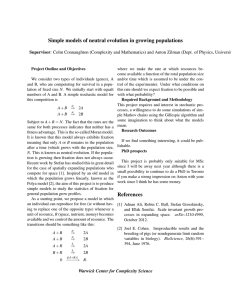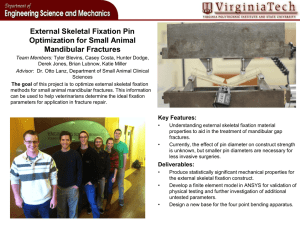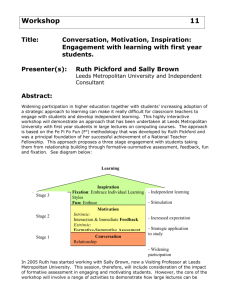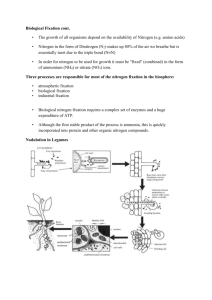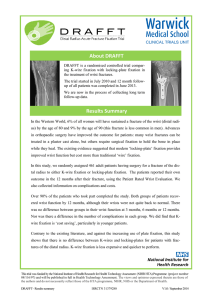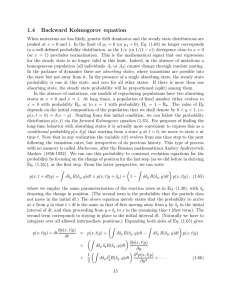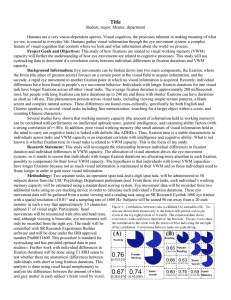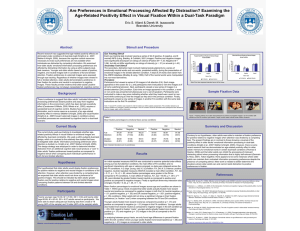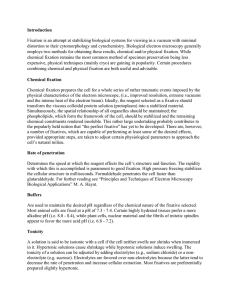Laura Whitmore: Land Resources & Environmental Sciences
advertisement
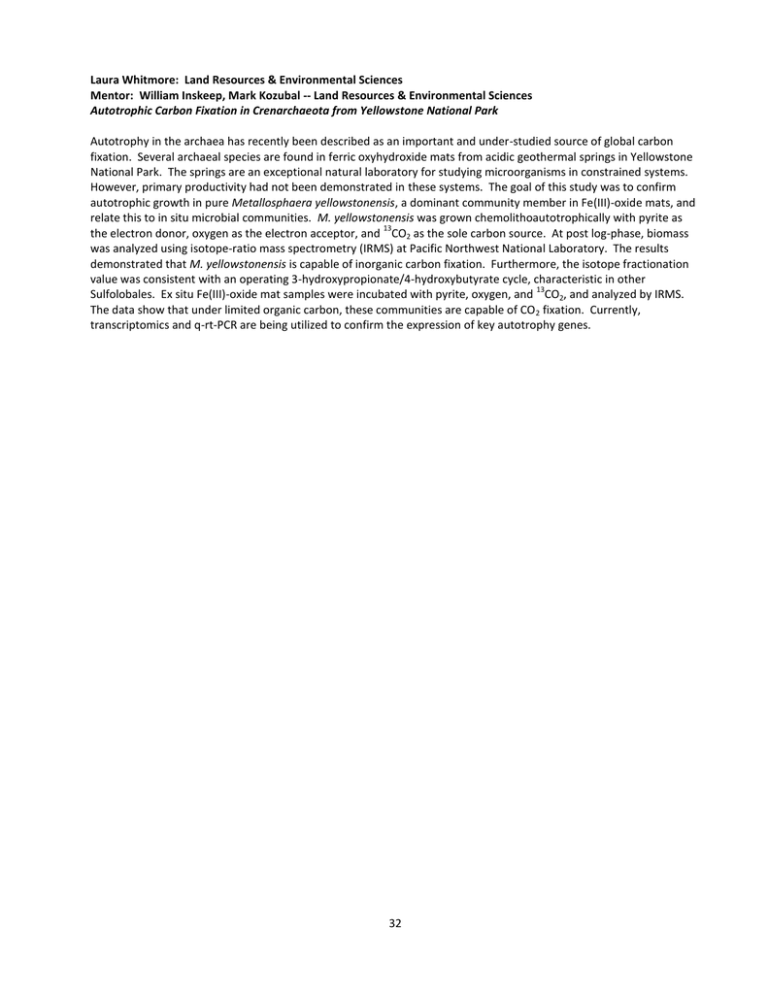
Laura Whitmore: Land Resources & Environmental Sciences Mentor: William Inskeep, Mark Kozubal -- Land Resources & Environmental Sciences Autotrophic Carbon Fixation in Crenarchaeota from Yellowstone National Park Autotrophy in the archaea has recently been described as an important and under-studied source of global carbon fixation. Several archaeal species are found in ferric oxyhydroxide mats from acidic geothermal springs in Yellowstone National Park. The springs are an exceptional natural laboratory for studying microorganisms in constrained systems. However, primary productivity had not been demonstrated in these systems. The goal of this study was to confirm autotrophic growth in pure Metallosphaera yellowstonensis, a dominant community member in Fe(III)-oxide mats, and relate this to in situ microbial communities. M. yellowstonensis was grown chemolithoautotrophically with pyrite as 13 the electron donor, oxygen as the electron acceptor, and CO2 as the sole carbon source. At post log-phase, biomass was analyzed using isotope-ratio mass spectrometry (IRMS) at Pacific Northwest National Laboratory. The results demonstrated that M. yellowstonensis is capable of inorganic carbon fixation. Furthermore, the isotope fractionation value was consistent with an operating 3-hydroxypropionate/4-hydroxybutyrate cycle, characteristic in other 13 Sulfolobales. Ex situ Fe(III)-oxide mat samples were incubated with pyrite, oxygen, and CO2, and analyzed by IRMS. The data show that under limited organic carbon, these communities are capable of CO 2 fixation. Currently, transcriptomics and q-rt-PCR are being utilized to confirm the expression of key autotrophy genes. 32
